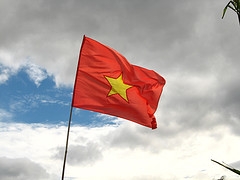
Outlook on Vietnamese banks negative over the next 12-18 months
Vietnam’s accommodative monetary policy has resulted in high inflation and prohibitive borrowing costs.
According to Moody’s, these range from 19% to 27% on VND-denominated loans.
Here’s more from Moody’s:
| Our outlook on the Vietnamese banking system over the next 12-18 months remains negative, reflecting the trends we observe among the six Moody’s-rated Vietnamese banks. These banks accounted for almost 30% of commercial banking system assets as of December 2010. Our outlook is negative, in line with Vietnam’s negative sovereign outlook. Both outlooks reflect a difficult operating environment characterized by domestic macroeconomic imbalances. Despite a strong rebound in economic growth following the global financial crisis, Vietnam’s accommodative monetary policy has resulted in high inflation and prohibitive borrowing costs. These range from 19% to 27% on VND-denominated loans. In parallel, we observe a troubling trend towards increased US dollar loans. As a result of low US dollar lending rates, at 6% to 8% in the Vietnamese market, US dollar credit growth hit 23% in 1H2011, while that of VND credit growth was up only 3%. This is a concern as it exposes borrowers to refinancing risks if the US dollar to VND exchange rates become unfavourable for the borrower at the time of loan repayment. A persistent problem in Vietnam is the lack of detail about the country’s true economic position and the policy direction of the government. This makes it difficult to assess the extent of the banking system’s weaknesses and its challenges. In fact, we view asset quality as being in far worse condition than implied by the 2% level of non-performing loans (NPLs) officially reported. For instance, some banks with significant exposures to Vinashin – the state-owned shipbuilder, which is facing financial difficulties and defaulted on its foreign currency borrowings at end-2010 -- currently classify their exposures either as “performing”, or as “special mention” loans. And while some provisions have been made for these exposures, we are so far unaware of any Vinashin exposure being classified as a NPL. |
























 Advertise
Advertise






